-
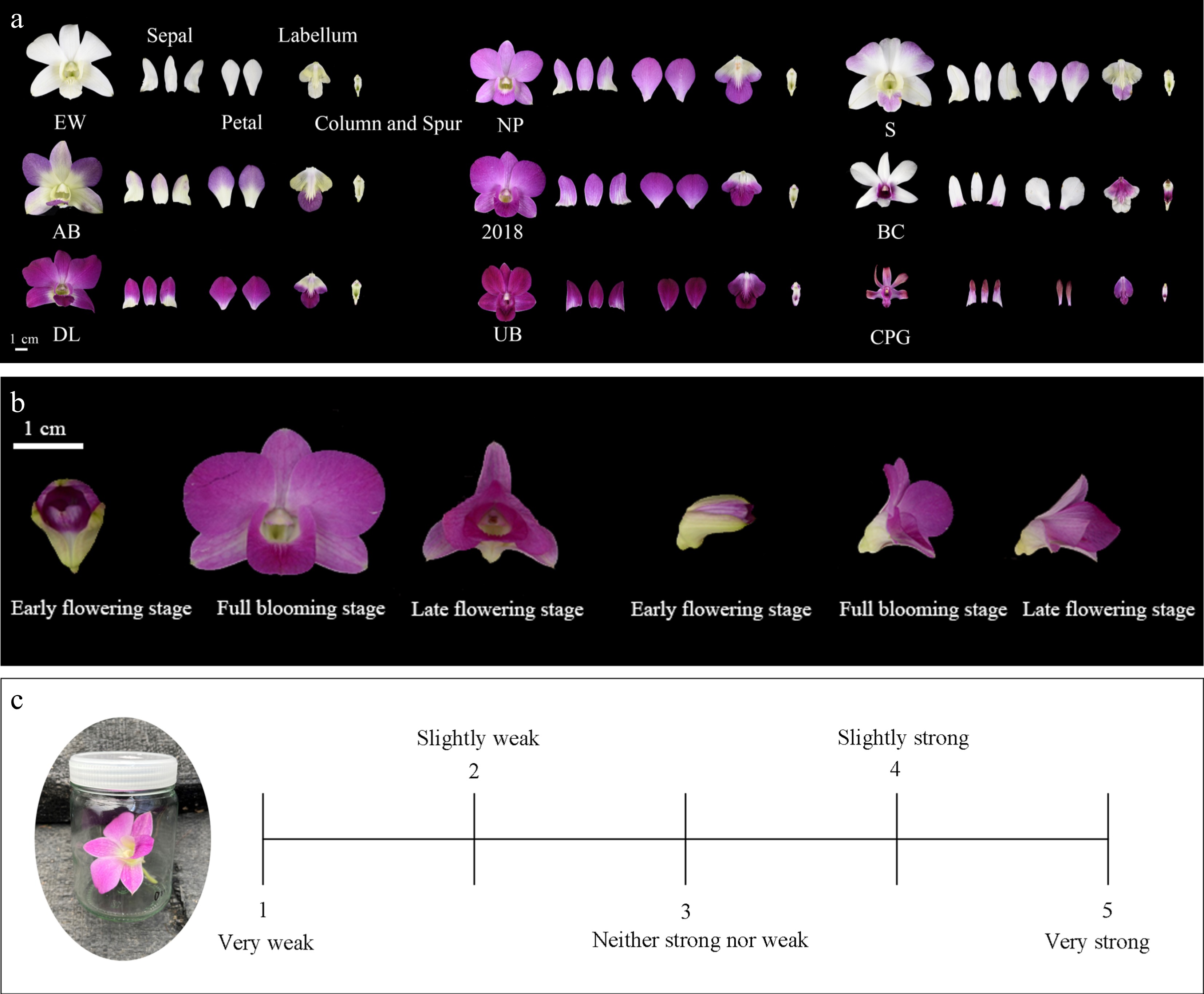
Figure 1.
(a) Floral organs of nine den-phals. (b) Different flowering stages of den-phals. (c) The 5-point interval scale for evaluation of den-phals floral scent intensity. The floral scent intensity gradually increasing from point 1 to 5.
-
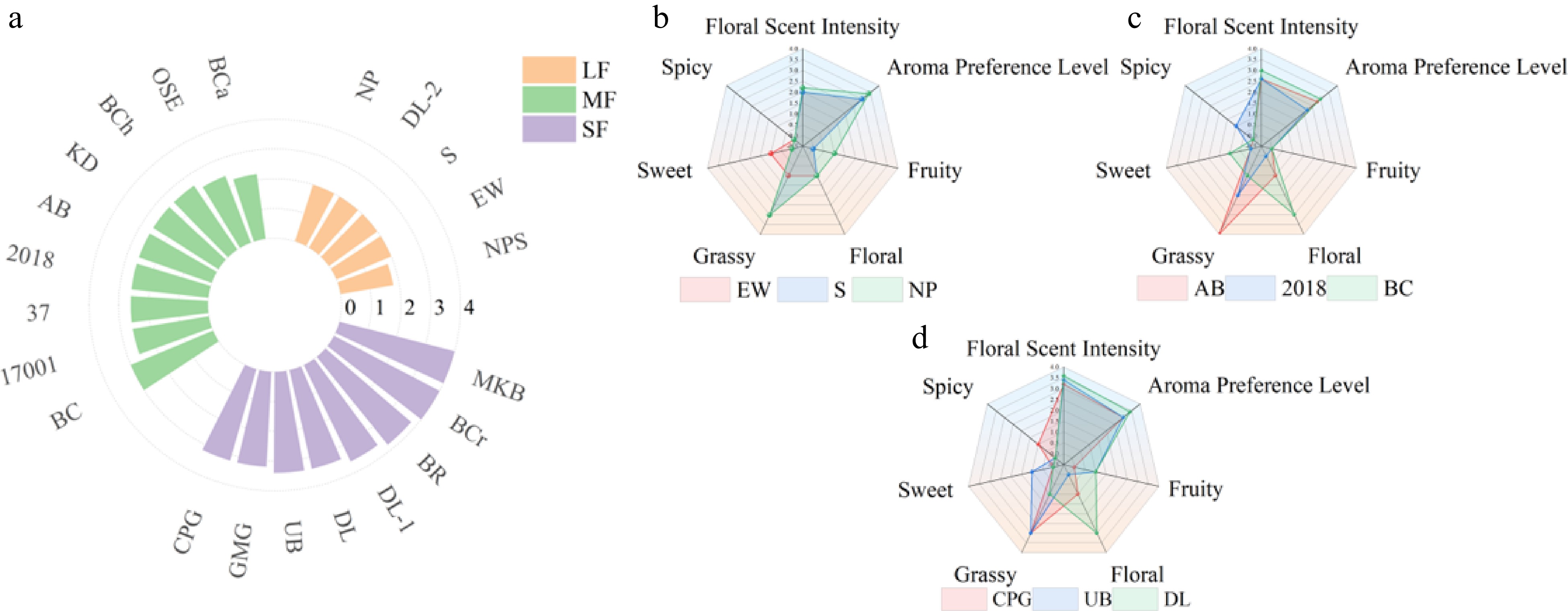
Figure 2.
Sensory evaluation of den-phals floral fragrance. (a) Sensory evaluation of aroma intensity for 22 den-phals. (b) Radar chart of sensory evaluation for the light fragrance category. (c) Radar chart of sensory evaluation for the medium fragrance category. (d) Radar chart of sensory evaluation for the strong fragrance category. (LF: light fragrance; MF: medium fragrance; SF: strong fragrance).
-
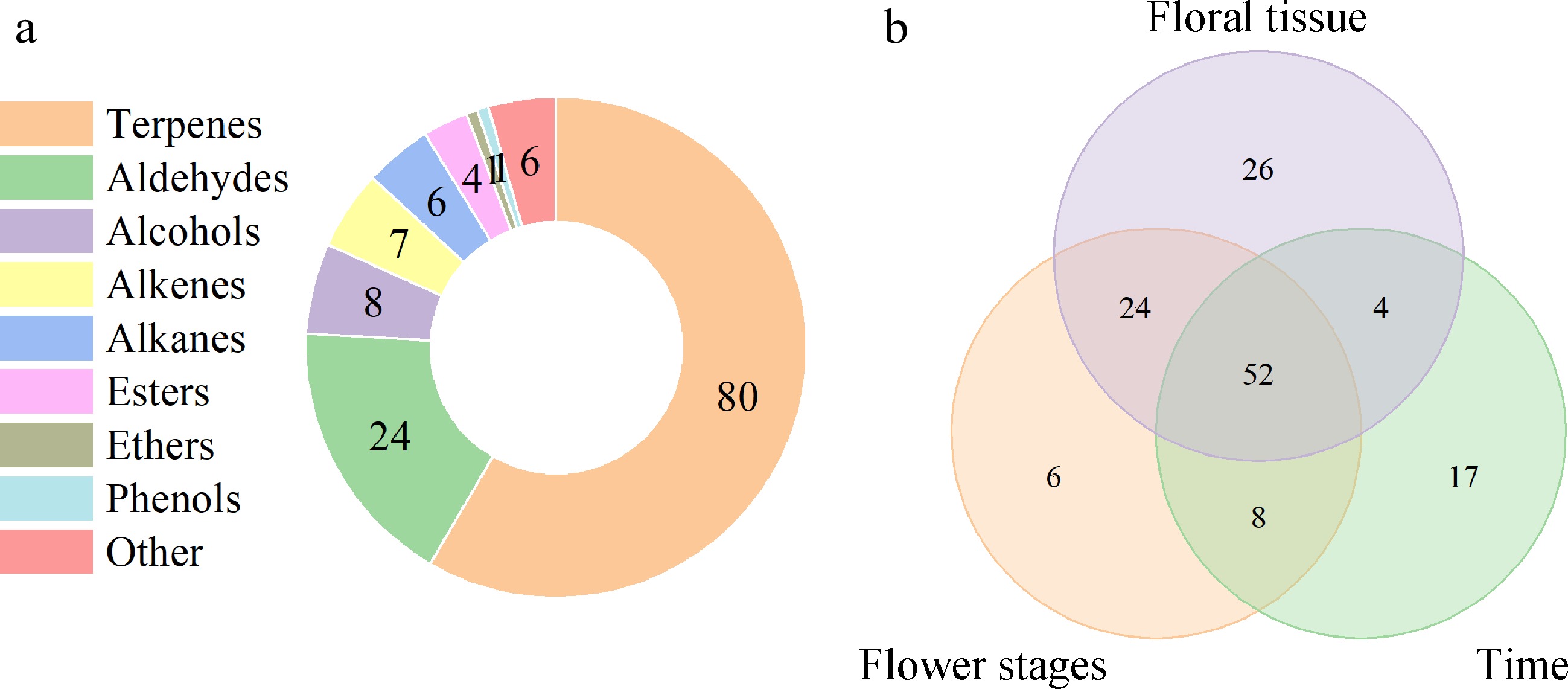
Figure 3.
Volatile components in den-phals. (a) Number of volatile compounds in different categories. (b) Venn diagram of types of volatiles at different flowering stages, times of the day, and organs.
-
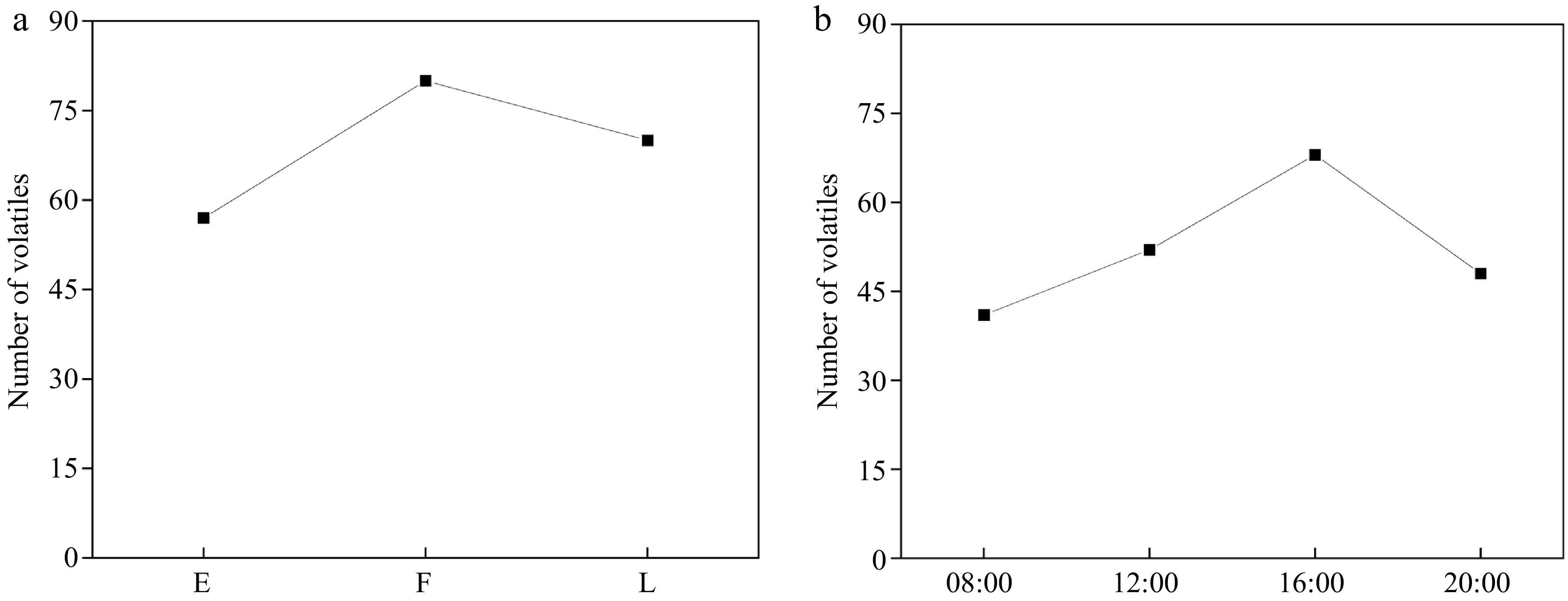
Figure 4.
Volatiles number change diagram. (a) Different flowering stages (E: early flowering stage; F: full flowering stage; L: late flowering stage). (b) Different times of the day.
-

Figure 5.
Relative concentration of volatile compounds in den-phals from different fragrance categories. (a) Different flowering stages. (b) Different times of the day. (c) Different floral organs. (E: early flowering stage; F: full flowering stage; L: late flowering stage; (C: column and spur; L: labellum; P: petals; S: sepals; *, p < 0.05; **, p < 0.01).
-

Figure 6.
Heatmap analysis and hierarchical clustering analysis for den-phals. (a) Full flowering stage. (b) Heatmap analysis for VIP > 1 of different times of the day (8: 8 o' clock; 12: 12 o' clock; 16: 16 o'clock; 20: 20 o'clock). (c) Different flower organs (C: column and spur; L: labellum; P: petals; S: sepals).
-
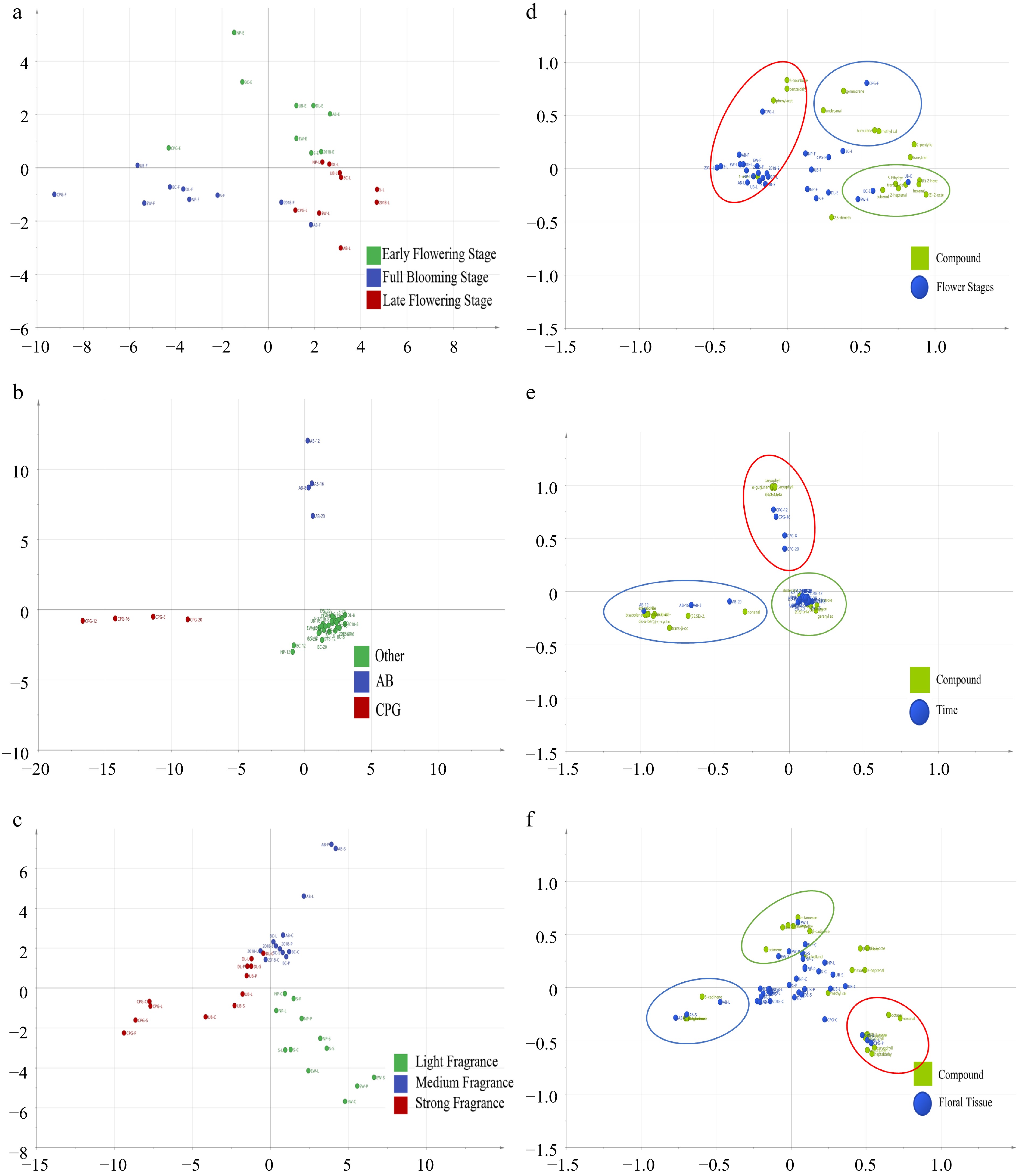
Figure 7.
OPLS-DA models of volatile compounds. (a) Different flowering stages. (b) Different times of the day. (c) Different flower organs. VIP > 1 substance double-region plot. (d) Different flowering stages. (e) Different times of the day. (f) Different flower organs. (The colors of the circles in d, e, and f correspond to the colors in the legends of a, b, and c, respectively).
-
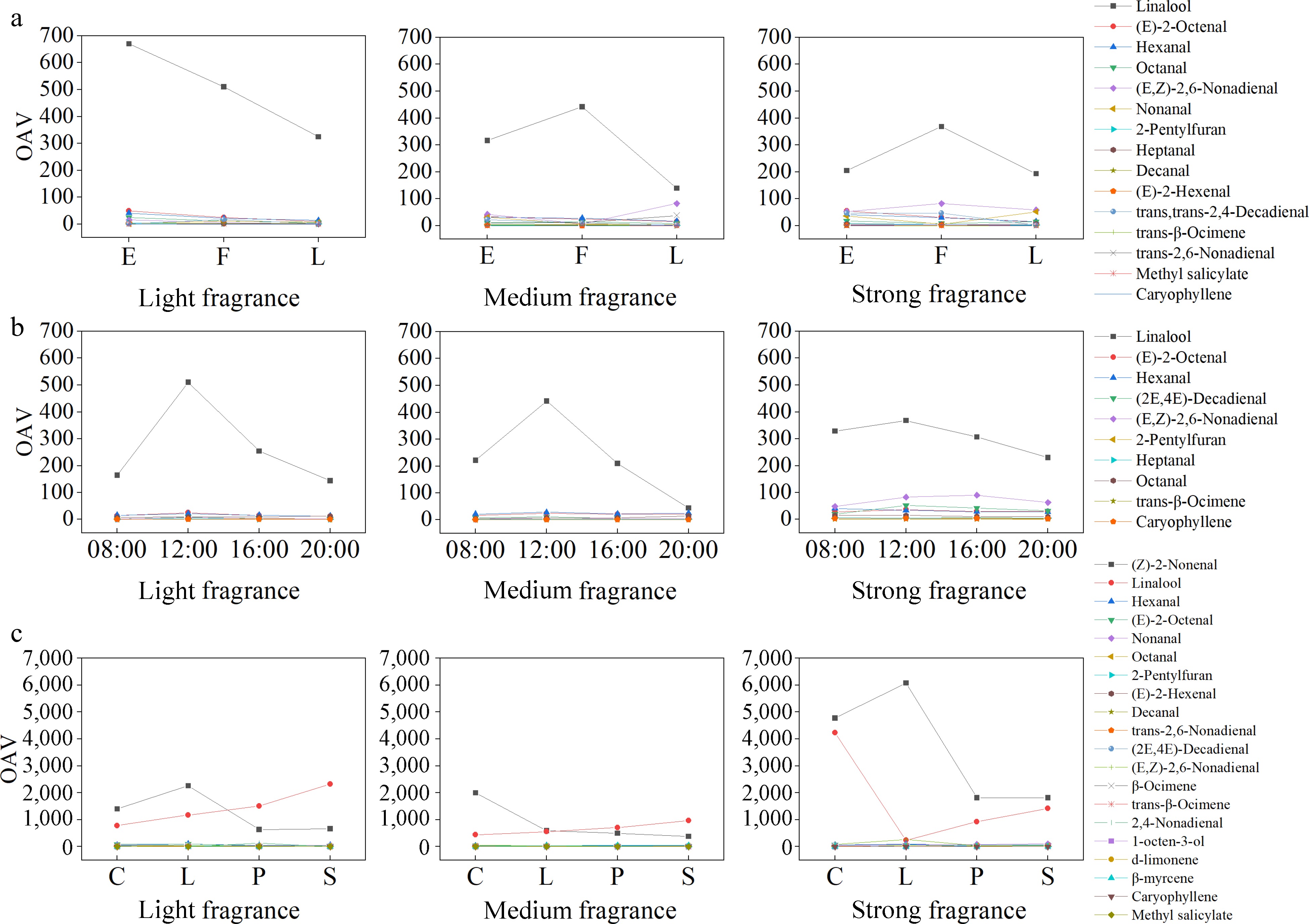
Figure 8.
Line graphs showing the relationship between the OAV of aromatic compounds of nine den-phals from light, medium, and strong fragrance categories and (a) flowering stage, (b) times of the day, and (c) floral organs. (a) E: early flowering stage; F: full flowering stage; L: late flowering stage. (c) C: column; L: labellum; P: petal; S: sepal.
-
Hybrid name
or designationAbbreviations Hybrid name
or designationAbbreviations "37-03" "37" D. Nopporn Pink NP "17001-S36" "17001" D. Oh Swee End OSE "2018086-6" "2018" D. Udomsri Beauty UB "DL2020-1" "DL" D. King Dragon KD "DL2020-6" "DL-1" D. Burana Charming BC "DL2021-6" "DL-2" D. Smile S D. Emma White EW D. Mount Kelly Beauty MKB D. Burana Crystal BCr D. Chao Praya Garnet CPG D. Bertha Chong BCh D. Nanyang Primary School NPS D. Give My God GMG D. Black Cat BCa D. Aridang Blue AB D. Banana Royal BRTaT Table 1.
Names and abbreviations of den-phals used in the experiments.
Figures
(8)
Tables
(1)